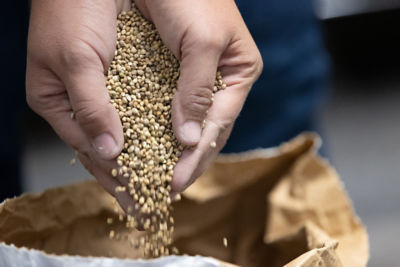Causal Agent
Erwinia carotovora subsp. carotovora.
Distribution
Worldwide
Symptoms
The first symptom is a light to dark colored, sunken lesion. As the rot progresses the lesion expands, causing a slimy rot, and bacteria may ooze through cracks in the epidermis.
Black Mold Rot – Causal Agent: Alternaria alternata and Stemphyfium species. Symptoms can range from superficial flecking to brown-black, dry, sunken lesions which may extend into fruit cavities. V-shaped lesions often develop on the stem scar and with adequate humidity a dense layer of black fungal conidia develops on the lesion surface.
 Alternaria alternata-infected fruit
Alternaria alternata-infected fruit
Pythium Fruit Rot – Causal Agent: Pythium species. Lesions start as water-soaked spots on both green and ripe fruit. The lesions quickly expand, engulfing the entire fruit, giving it a water balloon appearance. When the epidermis is ruptured, the fruit quickly collapses. When humidity is high, a white cottony growth will cover the lesion surface.
Rhizoctonia Fruit Rot – Causal Agent: Rhizoctonia so/ani. begins as a firm rot, which rapidly becomes a watery soft rot. It usually occurs on ripe fruit. which are in contact with the soil, and is characterized by rings that form in the infected area. A brown fungus growth frequently occurs over the surface of the infected fruit.
 Fruit with lesions caused by Rhizoctonia solani.
Fruit with lesions caused by Rhizoctonia solani.
Rhizopus Rot – Causal Agent: Rhizopus stolonifer. Lesions develop rapidly and have a puffy, water-soaked appearance. A white fungal growth interspersed with tiny black spheres (fungal spores masses) on raised stalks may spread over the surface of the affected area. Rhizopus rot tends to have a fermented odor compared to the putrid odor of bacterial soft rot and sour rot.
Sour Rot – Causal Agent: Geotrichum candidum. This rot may occur on mature green as well as ripe tomatoes. The rot usually begins at the stem scar and may extend in sectors down the side of the fruit. A dull white fungal growth may occur where the epidermis cracks. The fruit often remains firm untilthe rot is advanced, and then a sour odor develops. Under favorable conditions infection can proceed rapidly on ripe fruit.
Conditions for Development
Both bacteria and fungi will enter through natural openings like the stem scars or through growth cracks and wounds caused by insect feeding and mechanical damage. Generally, warm temperatures and high humidity provide adequate conditions for bacteria and fungi to infect the fruit.
Control
Avoid fruit injury, especially at harvest. Cultural methods, which keep fruit from coming in contact with the soil, help prevent many of the fruit rots. Improve air movement in the field by orienting planting rows in the direction of prevailing winds, and use proper row and plant spacing to shorten the length of time that the fruit remains wet. Schedule sprinkler irrigation to minimize the length of time that free water remains on the fruit. Fungicides may offer some protection against some fruit rots. Firm fruited, crack-resistant varieties may escape infection by some fruit rots.



